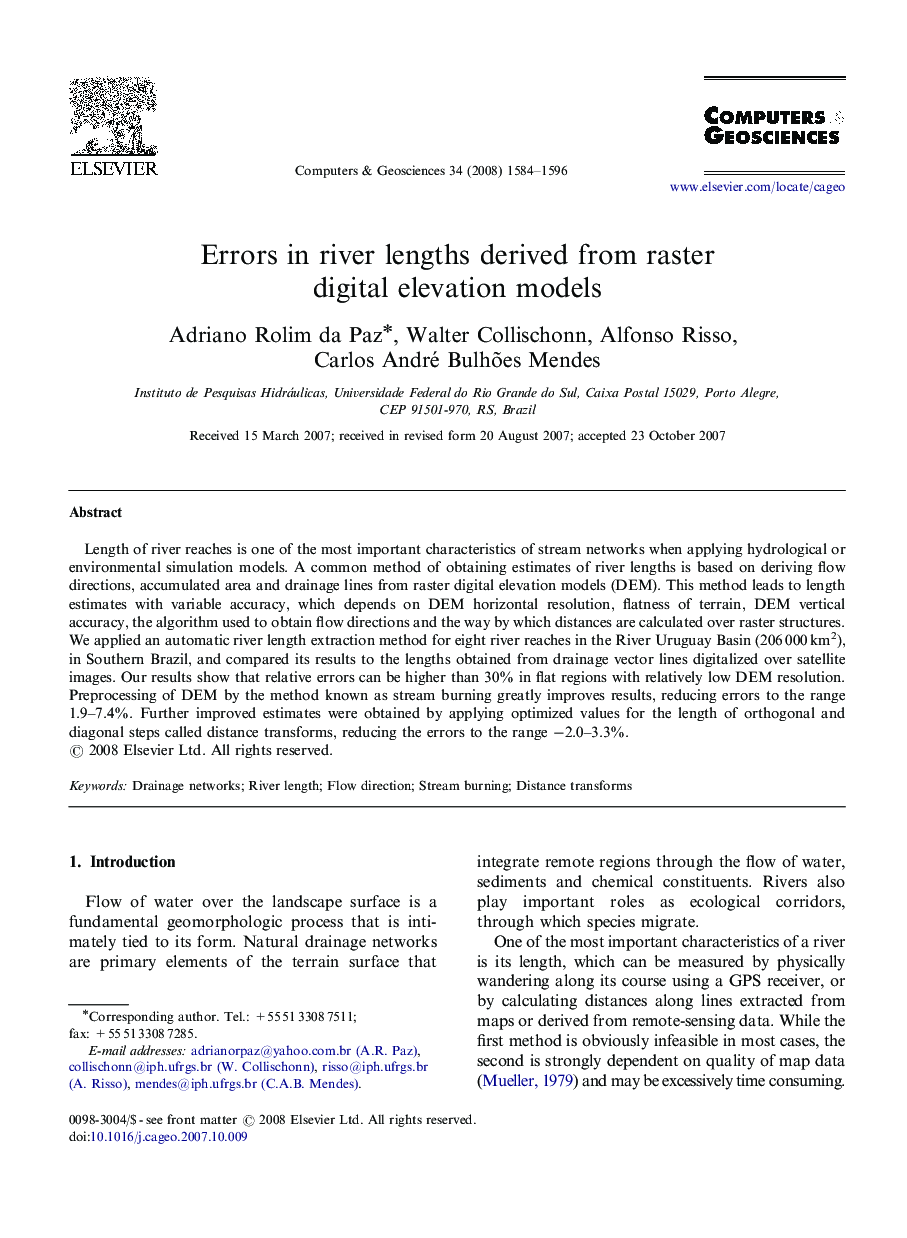| Article ID | Journal | Published Year | Pages | File Type |
|---|---|---|---|---|
| 508072 | Computers & Geosciences | 2008 | 13 Pages |
Length of river reaches is one of the most important characteristics of stream networks when applying hydrological or environmental simulation models. A common method of obtaining estimates of river lengths is based on deriving flow directions, accumulated area and drainage lines from raster digital elevation models (DEM). This method leads to length estimates with variable accuracy, which depends on DEM horizontal resolution, flatness of terrain, DEM vertical accuracy, the algorithm used to obtain flow directions and the way by which distances are calculated over raster structures. We applied an automatic river length extraction method for eight river reaches in the River Uruguay Basin (206 000 km2), in Southern Brazil, and compared its results to the lengths obtained from drainage vector lines digitalized over satellite images. Our results show that relative errors can be higher than 30% in flat regions with relatively low DEM resolution. Preprocessing of DEM by the method known as stream burning greatly improves results, reducing errors to the range 1.9–7.4%. Further improved estimates were obtained by applying optimized values for the length of orthogonal and diagonal steps called distance transforms, reducing the errors to the range −2.0–3.3%.
